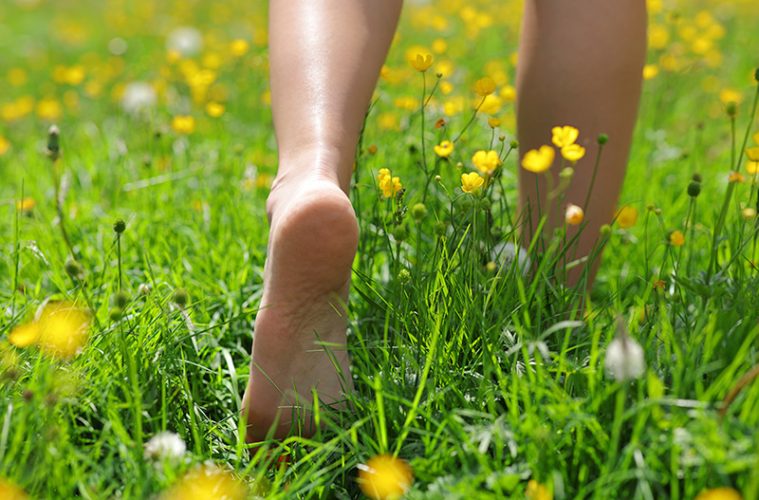Grounding, also known as Earthing, is the act of placing your bare feet firmly on the ground, to connect with the earth. Some people also lay down on the ground or submerge themselves in a body of water to practice grounding.
More than connecting to Mother Earth, grounding has many benefits and many use it as a form of therapy.
What does science say about grounding?
Science suggests that direct physical contact with the Earth, such as walking barefoot on soil, grass, or sand, can have potential health benefits.
The idea behind grounding is that the Earth’s surface has a negative charge, and when a person comes into contact with it, electrons from the Earth can be transferred to the body, thereby neutralizing positively charged free radicals and reducing inflammation. Proponents of grounding claim that it can have a wide range of health benefits, including reducing pain, improving sleep, reducing stress, and promoting overall well-being.
In 2019, the award-winning documentary, “The Earthing Movie: The Remarkable Science of Grounding” showed that Grounding (or Earthing) reduces inflammation. Inflammation is one of the most damaging internal biological processes that lead to chronic disease.
WATCH “The Earthing Movie: The Remarkable Science of Grounding” here:
Some studies have also reported benefits like improved sleep, and pain relief associated with grounding. While grounding may offer relaxation and stress relief for some people, its broad and scientifically established health benefits remain uncertain.
Since Spring is upon us, why not give yourself a healthy stress-relieving experience in nature? You can even hop out to your backyard and take a minute in your garden for a healing Earthing experience.
How plants can boost your mental health, according to science
Article originally written and published by Marian Volkwyn for Woman&Home.
Feature image: Pexels

